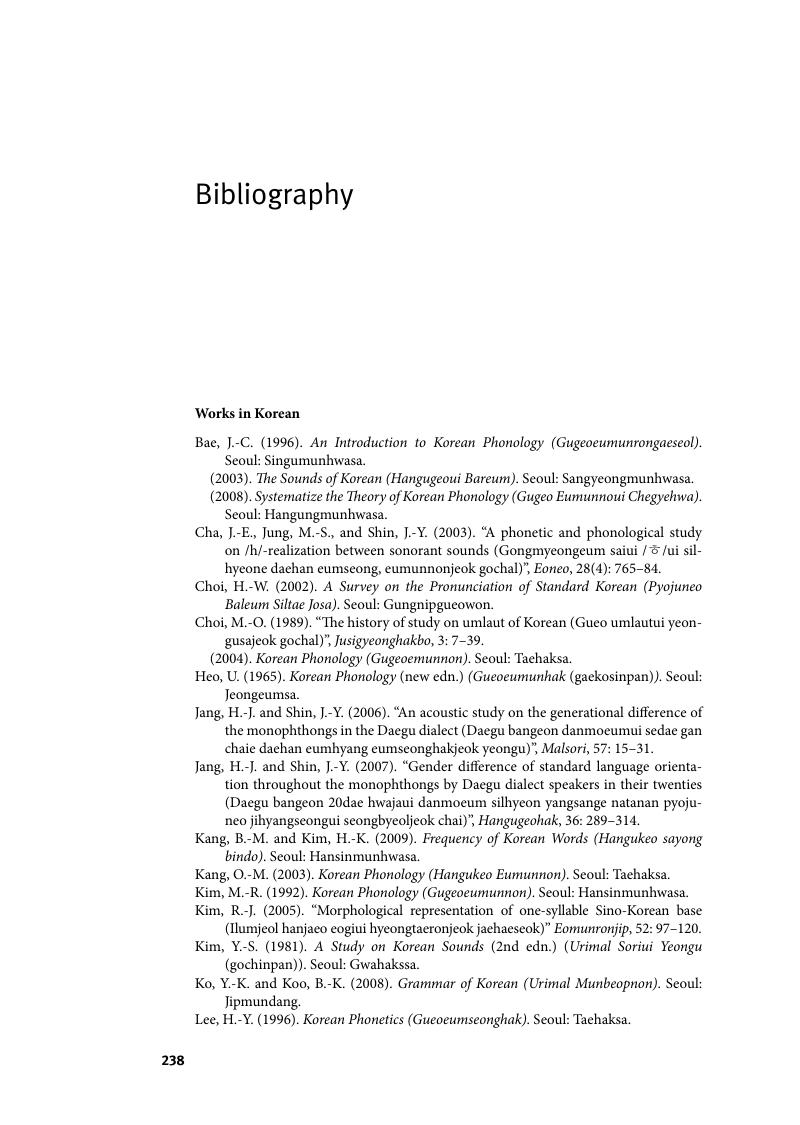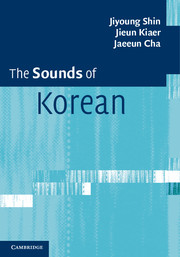Book contents
- Frontmatter
- Contents
- Figures
- Tables
- Preface
- Notational conventions
- 1 Characteristics of the Korean language
- 2 Production of sounds
- 3 Basic concepts of phonology
- 4 Consonants
- 5 Vowels
- 6 Frequency trends of Korean sounds
- 7 Prosody
- 8 Phonological rules of Korean (I)
- 9 Phonological rules of Korean (II)
- 10 Loanword phonology
- Notes
- Bibliography
- Index
- References
Bibliography
Published online by Cambridge University Press: 05 November 2012
- Frontmatter
- Contents
- Figures
- Tables
- Preface
- Notational conventions
- 1 Characteristics of the Korean language
- 2 Production of sounds
- 3 Basic concepts of phonology
- 4 Consonants
- 5 Vowels
- 6 Frequency trends of Korean sounds
- 7 Prosody
- 8 Phonological rules of Korean (I)
- 9 Phonological rules of Korean (II)
- 10 Loanword phonology
- Notes
- Bibliography
- Index
- References
Summary

- Type
- Chapter
- Information
- The Sounds of Korean , pp. 238 - 241Publisher: Cambridge University PressPrint publication year: 2012



